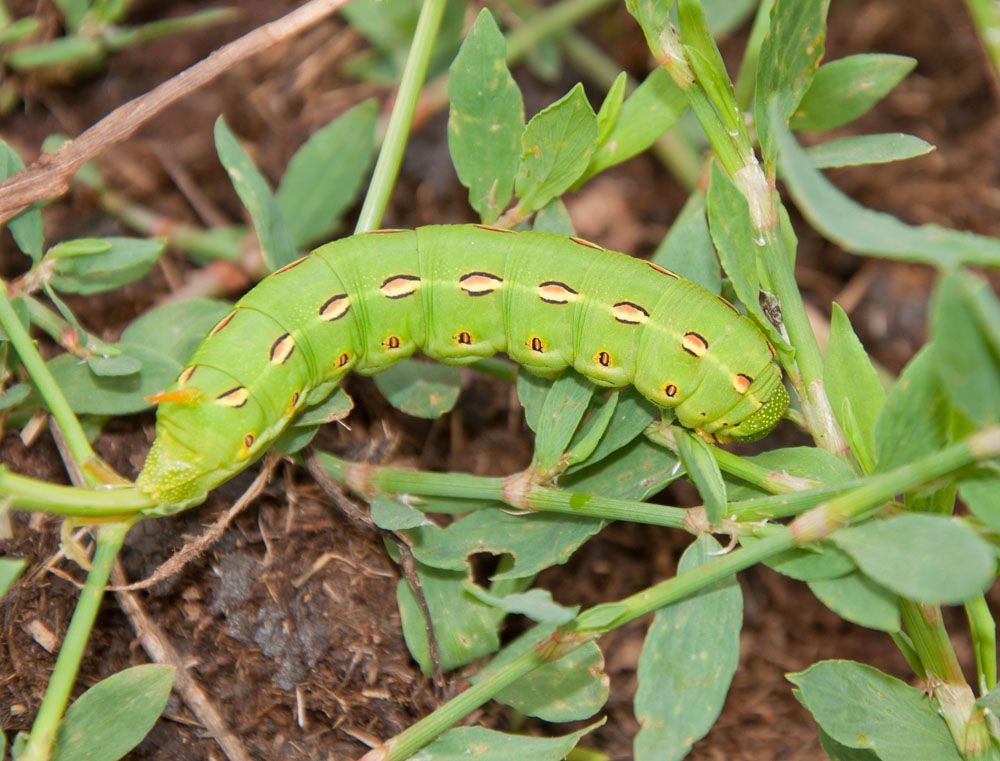
Whitelined Sphinx – Hyles lineata
Whitelined Sphinx – Hyles lineata
Scientific name: Hyes lineata
Common name: White-lined sphinx, hummingbird moth
Appearance: White-lined sphinx has a bird-like size with a wingspan of 76.2 mm; hence, it is called a hummingbird moth. Depending on the area, the larval form or the caterpillar shows variable color, ranging from lime green to black. It has a black body with orange spots arranged in a line. The last body segment has a tail-like protruding segment. Forewings of adult moths are brown with tan stripes, while the hindwings are black with a median pink band. The moth has a stout body covered with fur, and the veins are covered with white lines.
Host plants or food: White-lined sphinx caterpillars feed on apples, willow weeds, grapes, tomatoes, and elm. The adults feed on petunia, honeysuckle, fuschia, moonvines, and bouncing bets.
Territory: Throughout North America
Mode of damage: White-lined sphinx caterpillars are leaf chewers, while the adults feed on the nectar of several plants.
Habits and life history
White-lined sphinx females lay eggs on several plants, which hatch into larvae.
Adults feed on bright-colored flowers during the day and pale flowers during the night.
The larvae overwinters and emerge between February and November, during which they feed on host plants.
After feeding, the larvae burrow into the ground to pupate and emerge as adults after 2 to 3 weeks.
They usually produce two generations per year. In warmer climates, there may be more than two generations.
